Supporting Frontline Healthcare Through Robotics
NSK is working to assist society by developing new service robot technology, including robotic devices for moving patients in medical settings. In October 2021, NSK joined a Kanagawa prefectural government project to implement robotic technology in hospitals to help prevent the spread of COVID-19. NSK is working to further develop its robotics technologies through dialogue with frontline medical staff. For this installment, we spoke with two engineers involved in this new technology development.

Profile
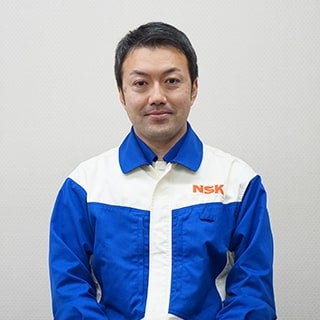
So Sugiura
Coordinator
Technology Development Department 1
New Field Products Development Center
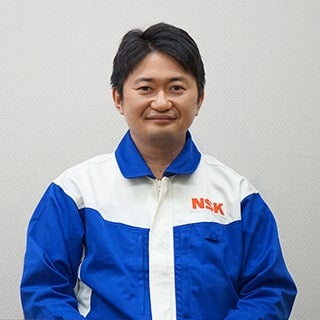
Seiichi Teshigawara
Coordinator
Technology Development Department 1
New Field Products Development Center
Developing robots in collaboration with users

Hospital corridor
Sugiura We are working to develop new robots to assist human users and help solve societal issues. As part of this effort, we want to create robots that can be used in settings where there are many people are moving around. One such setting is medical facilities and hospitals, and NSK has been developing robots for medical and nursing care. We believe that quietness and smooth movement-NSK's technological strengths-are ideal for applications in this field.
In the planning stage, one candidate for development was an autonomous mobile robot. However, after actually observing the inner workings of a hospital, I realized how narrow the corridors are and how many people are coming and going. Therefore, we decided that a robot that could assist staff during patient transfer would be more helpful than an autonomous mobile robot. We also realized that robotics could reduce the physical burden on medical staff and help facilitate work-style reform in the healthcare sector. Based on this approach, we built a robotic prototype that helps staff to move heavy objects such as stretchers and trolleys in hospitals. In October 2021, NSK joined a Kanagawa prefectural government project for implementing robotic technology in hospitals to help prevent the spread of COVID-19. Under this project, we are now demonstrating the use of a new service robot at Shonan Kamakura General Hospital. Our aim is for the technology eventually to be adopted for everyday use in the healthcare sector.
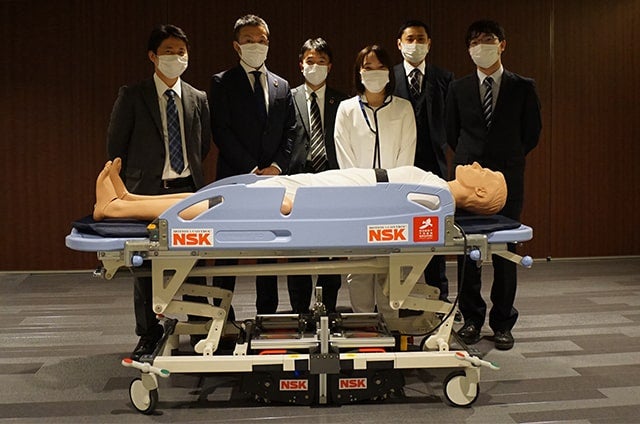
Participants in the technology demonstration project at Shonan Kamakura General Hospital
Teshigawara We need to focus on the user's essential issues well when developing these kinds of an assist robot. To achieve this, we started idea verification in short cycles. For example, rather than spending three years to develop the robot completely, it is better to get the customer's feedback every three months and improvements it during the cycle of development process.
Even if engineers tend to develop a high-performance multi-function robot in an initial step, but almost all of the robots do not fit users' essential needs. No matter how a technically brilliant, the robots are not accepted by user. This is why we set up the demonstration at Shonan Kamakura General Hospital, and we communicate directly with the staff. We have been developing the robot together with them.
Testing to create an easy-to-use product that meets real needs
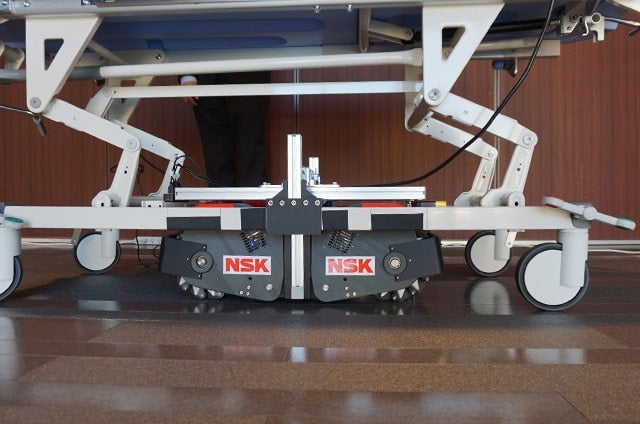
Motorized assistance robot installed at the base of a stretcher
Sugiura The robot we developed uses a motor drive to help staff move stretchers and trolleys in the hospital. It enables smooth starting and acceleration, as well as deceleration and tight turns. By having hospital staff try operating a stretcher with the robotic prototype attached, we were able to gather immediate feedback, which we then used to improve the robot. Working on this demonstration project has reminded me that hospitals are challenging work environments that include the need for difficult manual labor. As manufacturers, we hope to leverage our know-how to support the people working in frontline healthcare.
Nurse trying out the new robotic technology
Teshigawara In this project, we often get the user voice that cannot be measured as data, such as "Could you make the stretcher move more smoothly?" We tried to replace these comments into technical words and put together as specification sheet. We tuned the control parameter many times and obtained user feedback, then converted the results into numerical data. Also, once we achieved smooth stretcher movement, we then learned about other issues, including comfortable transport of patient. I think this development style will become another NSK strength going forward. We want to create a usable robot that fits the user needs.
Focusing societal needs and conducting rapid development to propose solutions
Sugiura I hope to work on other innovative projects such as this. In order to better meet the needs of society, I hope to rapidly develop the technological "seeds" for new business growth. It is always important to address social issues, but success as a business is also an important goal. Financial viability is essential in order for us to continue operating as a company. This is why I will be mindful of the balance between social contribution and business continuity.
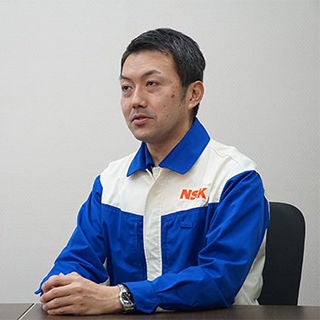
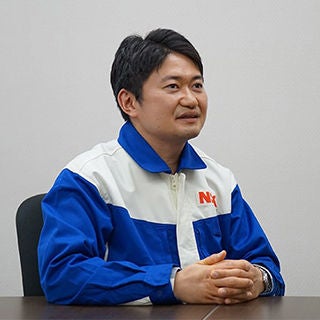
Teshigawara For this project, Mr. Sugiura was responsible for marketing, including the customer relationship, while I handle technology development. This situation allowed each of us to concentrate on our essential job. I think this helped us to move forward with the development speedy, and could approach customer essential problems. I would like to help create an environment that facilitates this kind of rapid prototyping, while also developing the human resources to perform this kind of cutting-edge work.
